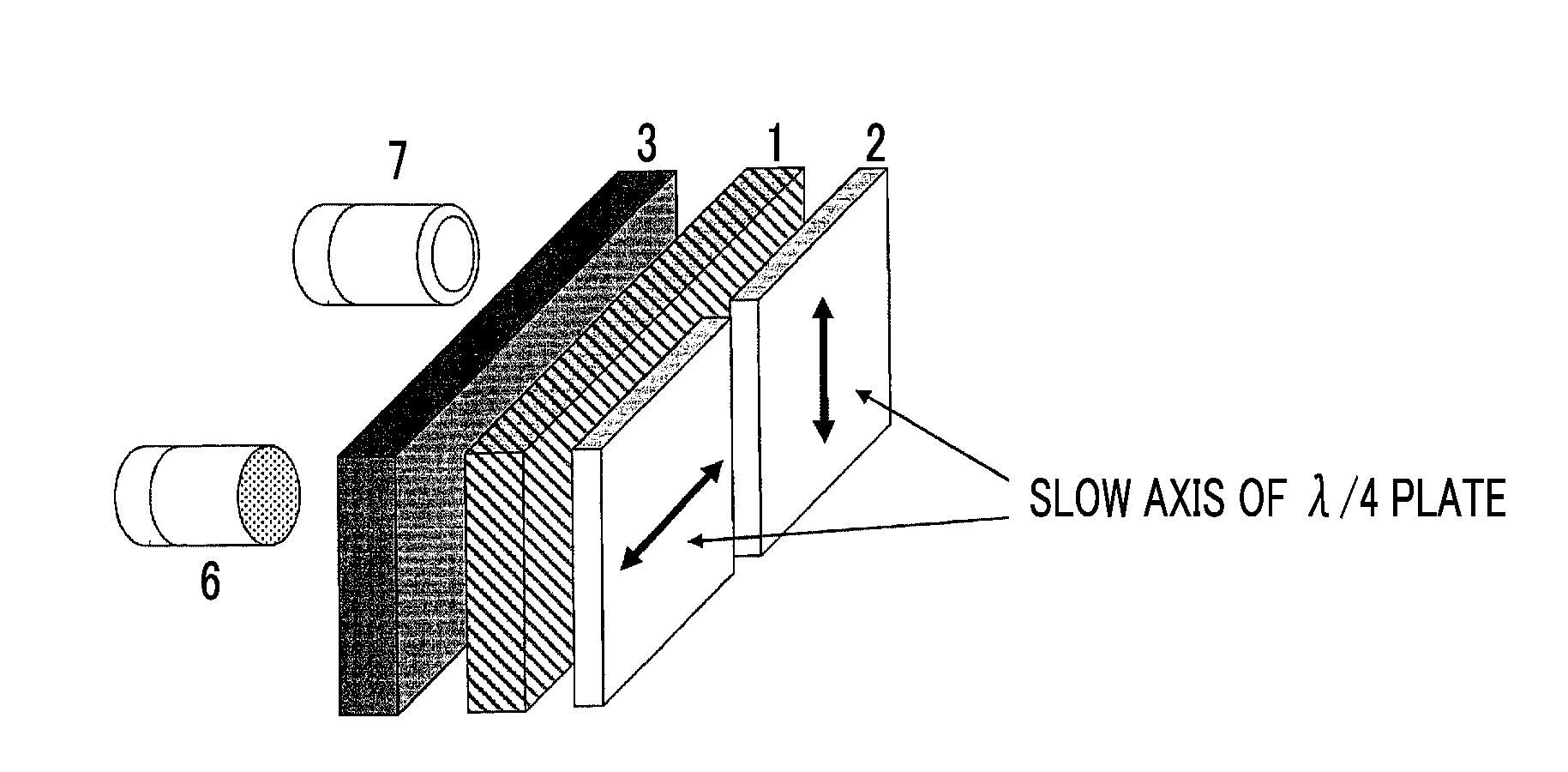Polarization filter and sensor system
a technology of polarization filter and sensor system, applied in the field of polarization filter, can solve the problems of reduced light intensity and light degree, and achieve the effect of improving the sensitivity of the detection system, preventing the reduction of sensitivity, and being highly sensitiv
- Summary
- Abstract
- Description
- Claims
- Application Information
AI Technical Summary
Benefits of technology
Problems solved by technology
Method used
Image
Examples
example 1
[0177]The rubbing-processed surface of PET manufactured by FUJIFILM Corporation that had undergone rubbing processing was coated with a coating solution A-2 shown in Table 1 at room temperature by using a wire bar such that the thickness of the film obtained after drying became 5 μm. The coating layer was dried for 30 seconds at room temperature and then heated for 2 minutes in an atmosphere with a temperature of 85° C. Thereafter, by using a D bulb (lamp of 90 mW / cm) manufactured by Fusion UV Systems Inc., the coating layer was irradiated with UV rays for 6 to 12 seconds at 30° C. at 60% of output, thereby obtaining a liquid crystal layer. The liquid crystal layer was coated with a coating solution A-3 shown in Table 1 at room temperature such that the thickness of the film obtained after drying became 5 μm. Subsequently, drying, heating, and UV irradiation were performed on the coating solution in the same manner as described above so as to form a second liquid crystal layer, ther...
example 2
[0186]The rubbing-processed surface of PET manufactured by FUJIFILM Corporation that had undergone rubbing processing was coated with a coating solution A-1 shown in Table 1 at room temperature by using a wire bar, such that the thickness of the film obtained after drying became 5 μm. The coating layer was dried for 30 seconds at room temperature and then heated for 2 minutes in an atmosphere with a temperature of 85° C. Thereafter, by using a D bulb (lamp of 90 mW / cm) manufactured by Fusion UV Systems Inc., the coating layer was irradiated with UV rays for 6 to 12 seconds at 30° C. at 60% of output, thereby obtaining a liquid crystal layer. The liquid crystal layer was coated with the coating solution A-2 shown in Table 1 at room temperature such that the thickness of the film obtained after drying became 5 μm. Subsequently, drying, heating, and UV irradiation were performed on the coating solution in the same manner as described above, thereby obtaining a second liquid crystal lay...
example 3
[0188]The rubbing-processed surface of PET manufactured by FUJIFILM Corporation that had undergone rubbing processing was coated with the coating solution A-1 shown in Table 1 at room temperature by using a wire bar, such that the thickness of the film obtained after drying became 5 μm. The coating layer was dried for 30 seconds at room temperature and then heated for 2 minutes in an atmosphere with a temperature of 85° C. Thereafter, by using a D bulb (lamp of 90 mW / cm) manufactured by Fusion UV Systems Inc., the coating layer was irradiated with UV rays for 6 to 12 seconds at 30° C. at 60% of output, thereby obtaining a liquid crystal layer. The liquid crystal layer was coated with the coating solution A-2 shown in Table 1 at room temperature such that the thickness of the film obtained after drying became 5 μm. Subsequently, drying, heating, and UV irradiation were performed on the coating solution in the same manner as described above, thereby obtaining a second liquid crystal l...
PUM
 Login to View More
Login to View More Abstract
Description
Claims
Application Information
 Login to View More
Login to View More - R&D
- Intellectual Property
- Life Sciences
- Materials
- Tech Scout
- Unparalleled Data Quality
- Higher Quality Content
- 60% Fewer Hallucinations
Browse by: Latest US Patents, China's latest patents, Technical Efficacy Thesaurus, Application Domain, Technology Topic, Popular Technical Reports.
© 2025 PatSnap. All rights reserved.Legal|Privacy policy|Modern Slavery Act Transparency Statement|Sitemap|About US| Contact US: help@patsnap.com



